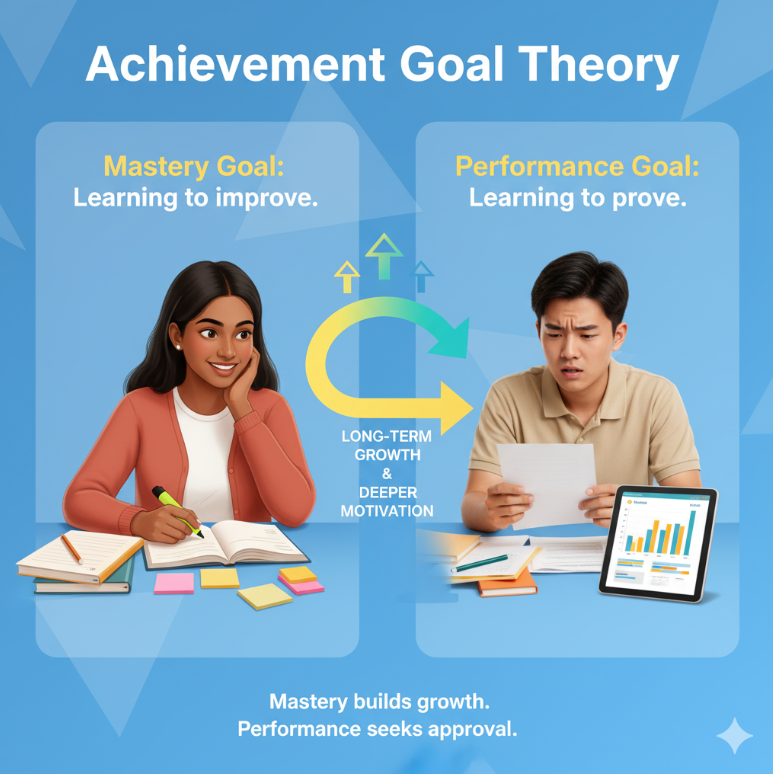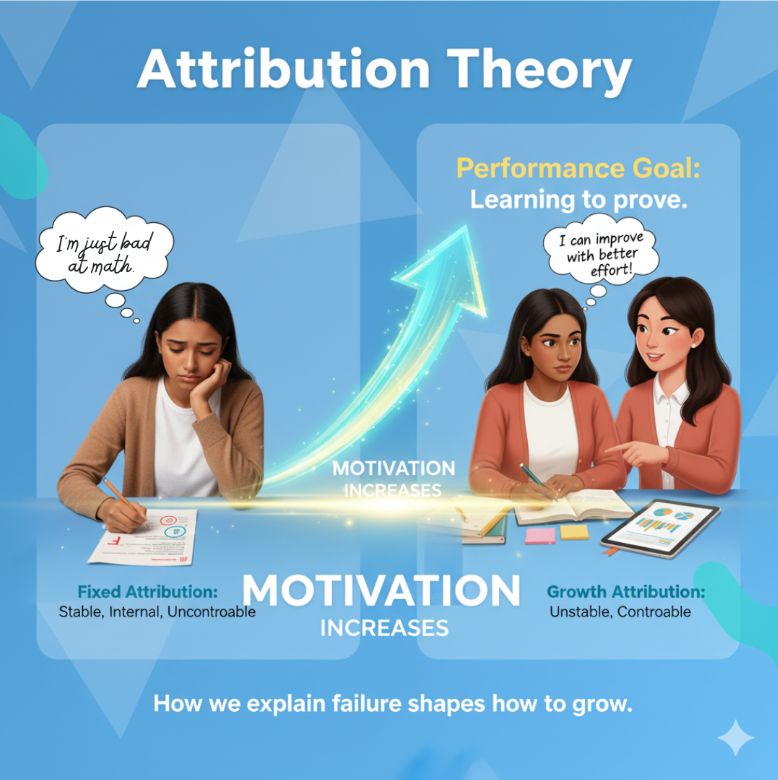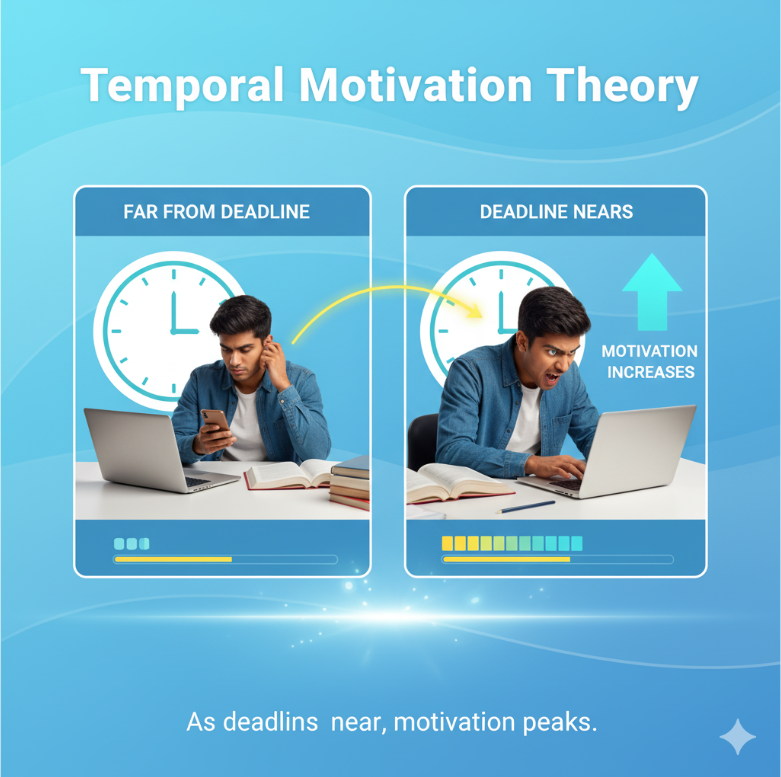Why do some students show up eager, persistent, and curious—while others struggle to stay engaged beyond the first five minutes of class?
The difference isn’t just intelligence. It’s student motivation—the silent engine that drives every act of learning.
A recent study from the American Psychological Association found that motivated students are 45% more likely to achieve higher academic success and demonstrate 60% better classroom participation compared to their unmotivated peers.
In other words, motivation for students doesn’t just inspire effort—it determines long-term achievement.
But here’s the problem: most educators and parents treat motivation as a mystery, when in fact, psychology offers powerful frameworks that explain and shape it.
In this guide, we’ll explore the 5 most influential theories of student motivation, backed by real-life examples and actionable insights that can reignite the drive to learn.
Expectancy-Value Theory: The Confidence-Value Equation That Fuels Success
Core Idea:
The Expectancy-Value Theory suggests that student motivation depends on two beliefs:
- The belief that one can succeed (expectancy).
- The belief that success matters (value).
When both align, motivation skyrockets. If one fails—confidence or value—motivation plummets.

Expectancy-Value Theory
Real-Life Example:
Sarah, a 9th grader, struggles in algebra. She doesn’t think she’s “good at math” (low expectancy), and she doesn’t see why it matters (low value). Her teacher reframes the subject, connecting algebra to her dream of becoming an architect. As her self-belief grows, so does her motivation for students—and her grades follow.
Actionable Tips:
- Connect subjects to real-world goals (career, hobbies, or aspirations).
- Build small, early wins to enhance expectancy.
- Regularly highlight how each lesson has personal relevance.
Self-Determination Theory: Motivation from the Inside Out
Core Idea:
According to Self-Determination Theory (SDT), student motivation thrives when three psychological needs are met:
- Autonomy: A sense of choice and control.
- Competence: Confidence in one’s ability to succeed.
- Relatedness: Feeling connected to teachers and peers.
Research shows that when these three needs are met, students display double the engagement levels and 70% greater academic persistence.

Self-Determination Theory
Real-Life Example:
Mr. Lee allows his middle-school science class to choose their own projects—some explore volcanoes, others robotics. Students feel ownership (autonomy), receive support (competence), and collaborate (relatedness). The result? Higher creativity and sustained motivation for students throughout the term.
Actionable Tips:
- Offer meaningful choices in assignments.
- Provide constructive feedback that builds competence.
- Encourage collaboration and community in classrooms.
Achievement Goal Theory: The Difference Between Learning and Proving
Core Idea:
This theory divides student motivation into two goal types:
- Mastery Goals: Focus on improving knowledge or skills.
- Performance Goals: Focus on outperforming others.
While performance goals may provide short bursts of drive, mastery goals lead to sustainable motivation and long-term learning.

Achievement Goal Theory
Real-Life Example:
Ethan doesn’t aim to “beat” his classmates in chemistry—he just wants to understand it. When he fails a test, he doesn’t quit. Instead, he reviews his mistakes. Over time, he develops deep expertise and consistent motivation for students driven by growth, not comparison.
Actionable Tips:
- Encourage process-oriented learning.
- Praise improvement and persistence, not perfection.
- Frame mistakes as essential steps toward mastery.
Attribution Theory: How Students Explain Failure Shapes Motivation
Core Idea:
Attribution Theory examines how students interpret success and failure. Motivated learners attribute results to controllable causes—like effort or strategy—while unmotivated students blame ability or luck.

Attribution Theory
Real-Life Example:
After failing a math test, John says, “I’m just bad at math.” That belief destroys student motivation. His teacher helps him reframe it: “You didn’t prepare effectively this time—but that’s something you can fix.” With this mindset shift, John studies differently and sees measurable improvement.
Actionable Tips:
- Teach students to attribute outcomes to effort and strategy.
- Replace fixed labels (“I can’t do this”) with growth language (“I can learn this”).
- Celebrate effort as much as success.
Temporal Motivation Theory: Why Deadlines Drive Action
Core Idea:
Temporal Motivation Theory (TMT) links student motivation to time, urgency, and reward. As deadlines approach, the perceived importance and emotional drive to act increase. This explains why many students procrastinate—motivation surges only when time runs short.

Attribution Theory
Real-Life Example:
Kevin ignores his research paper until two days before it’s due. Suddenly, motivation spikes, and he completes it in a rush. His teacher introduces weekly checkpoints to spread deadlines out, and Kevin’s motivation for students becomes more consistent.
Actionable Tips:
- Break large tasks into smaller, time-bound goals.
- Use progress trackers to visualize advancement.
- Create short-term incentives to maintain steady motivation.
Why Understanding These Theories Matters
When educators understand what fuels student motivation, they can transform classrooms from passive spaces into purpose-driven learning environments. Research in Educational Psychology Review (2023) shows that schools integrating motivation theories see a 22% improvement in student engagement and 15% higher average scores.
The truth? Motivation isn’t mysterious—it’s measurable, manageable, and teachable.
Frequently Asked Questions
What exactly is student motivation?
Motivation for students is the internal drive or desire that compels a learner to engage, persist, and succeed academically. It combines confidence, curiosity, and commitment.
Why is student motivation so important?
Because it predicts learning outcomes more strongly than IQ or socioeconomic status. Motivated students perform better, retain knowledge longer, and display higher creativity.
How can teachers increase student motivation in classrooms?
By using motivation theories—give autonomy (SDT), show value (EVT), emphasize growth (Achievement Goal), and encourage positive attributions.
Can technology help boost motivation for students?
Yes. Interactive learning platforms, gamified quizzes, and visual feedback systems increase engagement by offering instant rewards and a sense of progress.
How can parents support motivation for students at home?
Set clear expectations, praise effort instead of results, and connect learning to real-world goals (like hobbies or careers).
Does motivation differ for online vs. in-person learning?
Absolutely. Online learners need more self-regulation. Applying Self-Determination Theory—especially autonomy and relatedness—can help sustain digital motivation.
What are signs that a student lacks motivation?
Chronic procrastination, minimal participation, poor attendance, or lack of curiosity are tell-tale signs. The key is to identify the “why” behind the disengagement.
Conclusion: The Science of Motivation Meets the Art of Teaching
Understanding student motivation isn’t just for psychologists—it’s for every teacher, parent, and learner who wants lasting success.
The five theories—Expectancy-Value, Self-Determination, Achievement Goal, Attribution, and Temporal Motivation—offer a blueprint to transform disengagement into drive.
The best educators don’t just teach subjects; they teach students how to believe, persist, and find meaning in their learning journey. And when that happens, motivation stops being a struggle—it becomes a superpower.
So, the next time you see a student losing focus, don’t ask “What’s wrong with them?” Ask instead, “What theory of motivation are they missing?”



